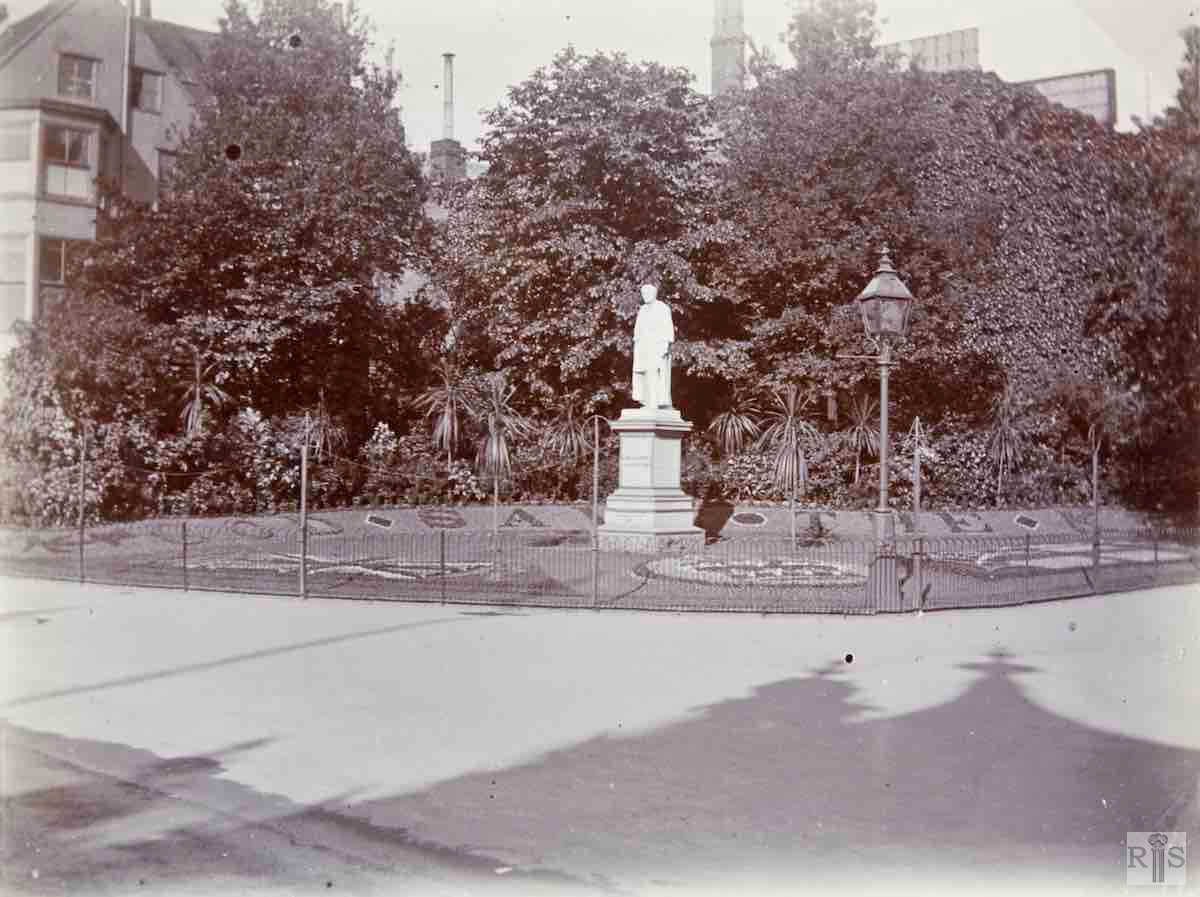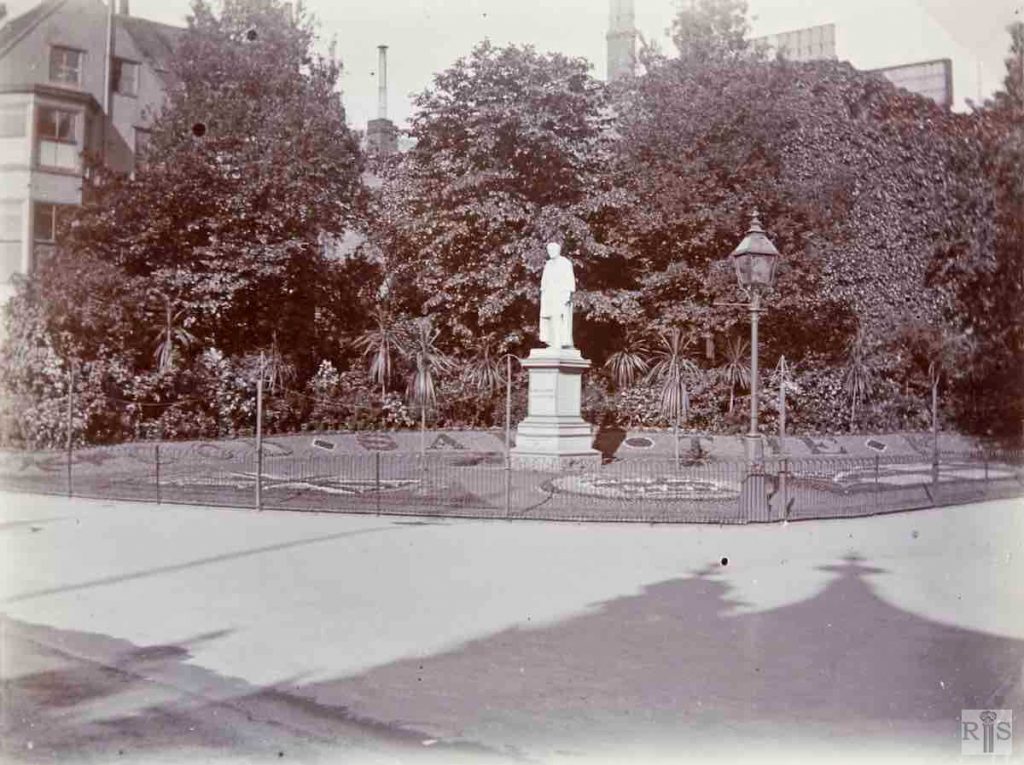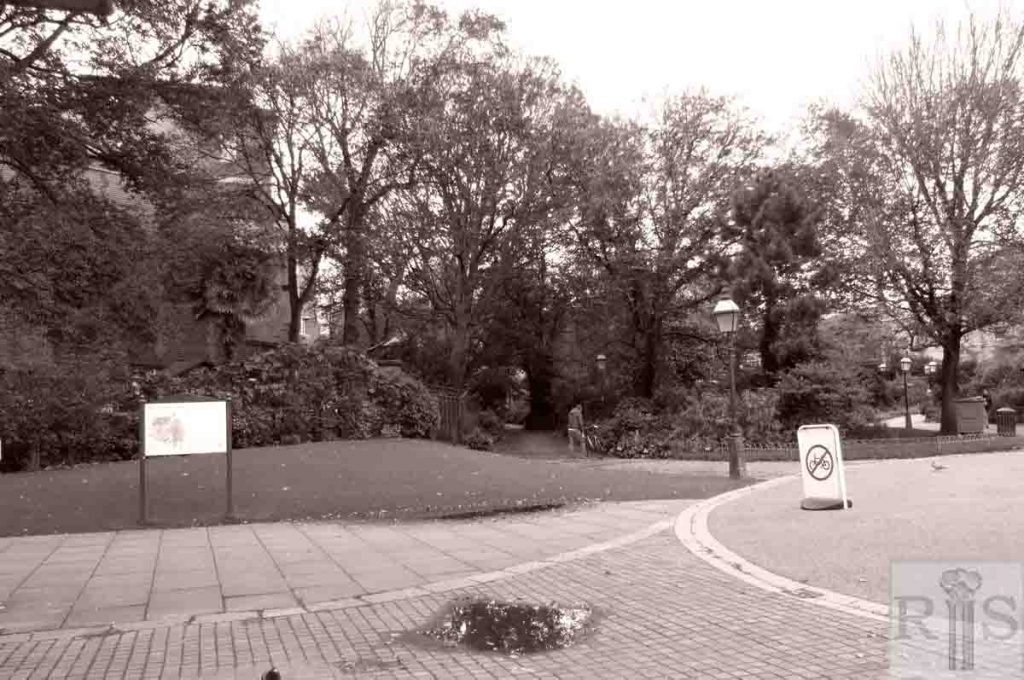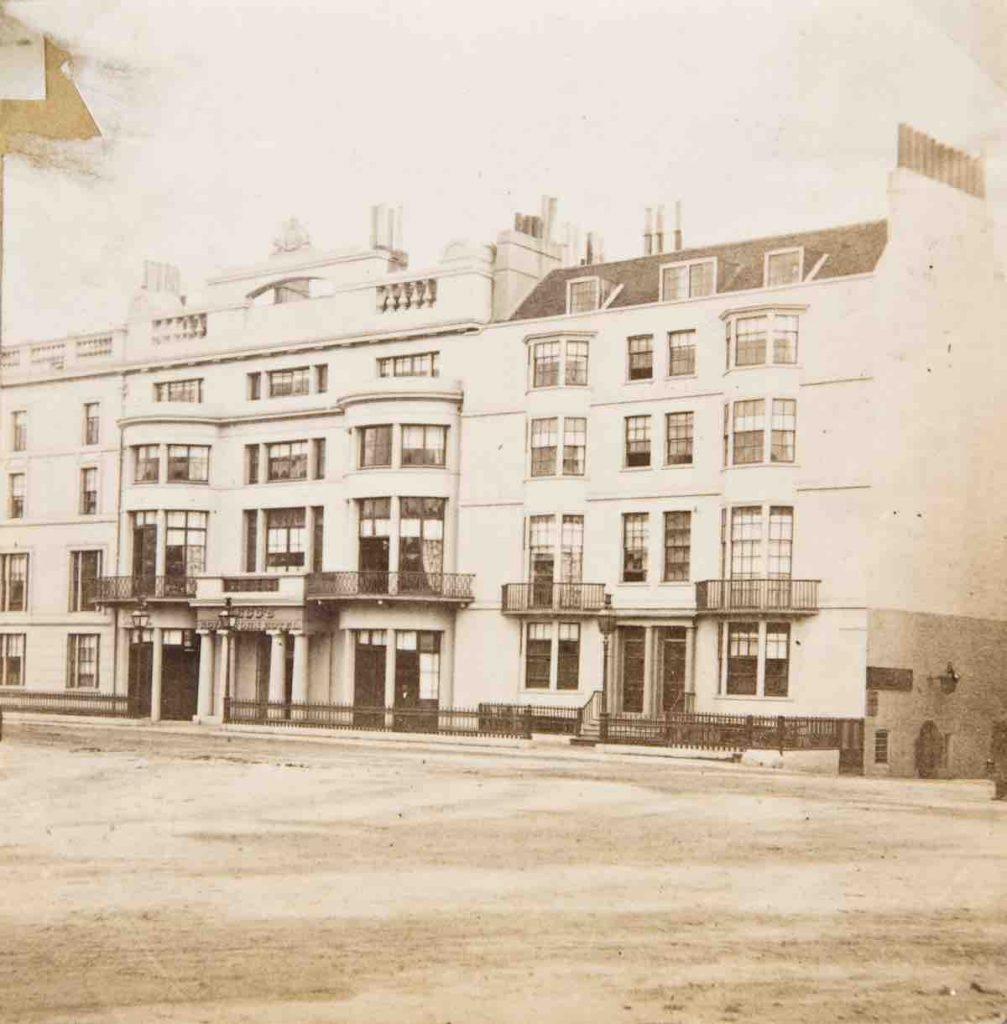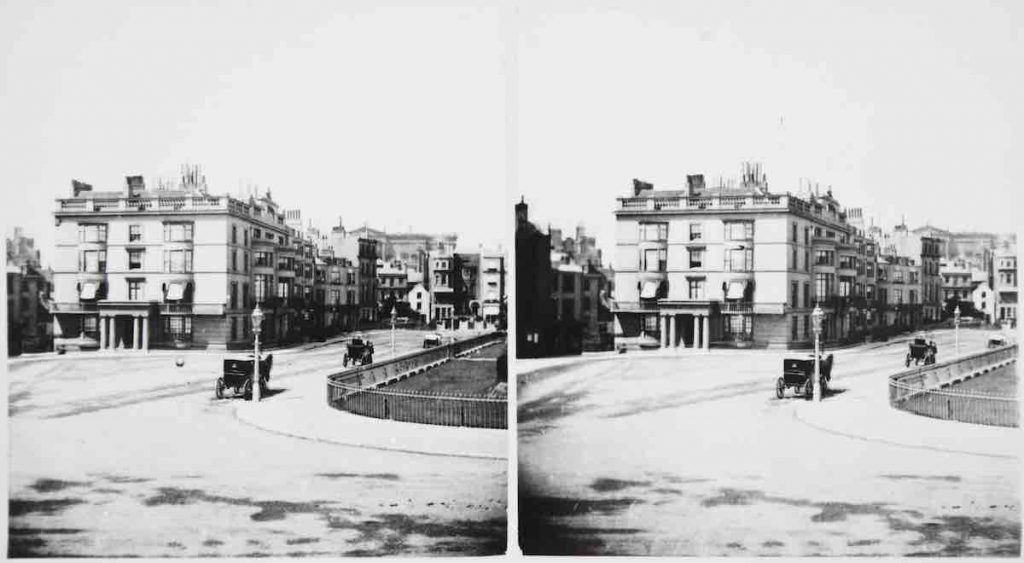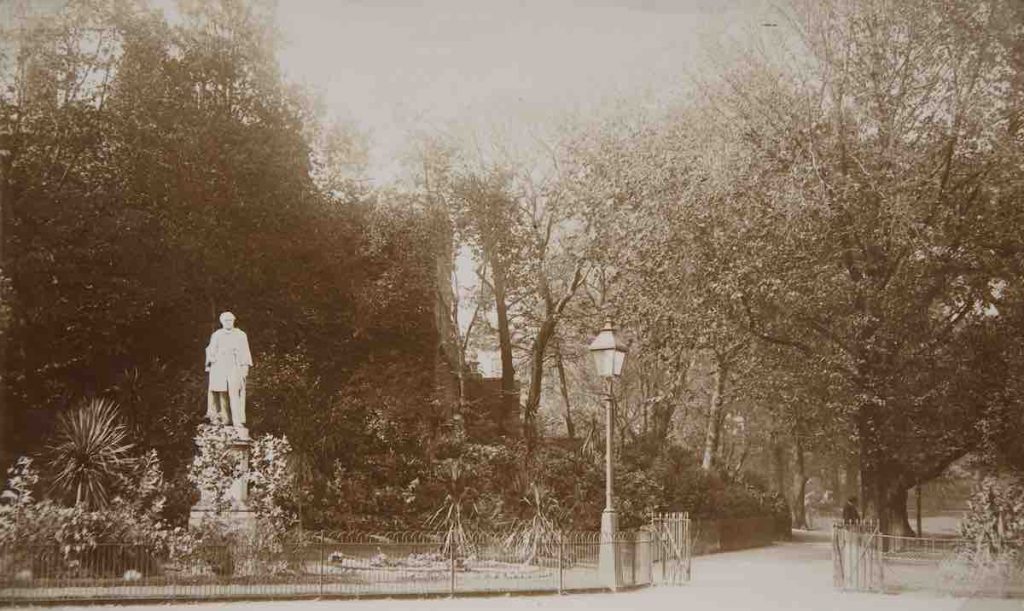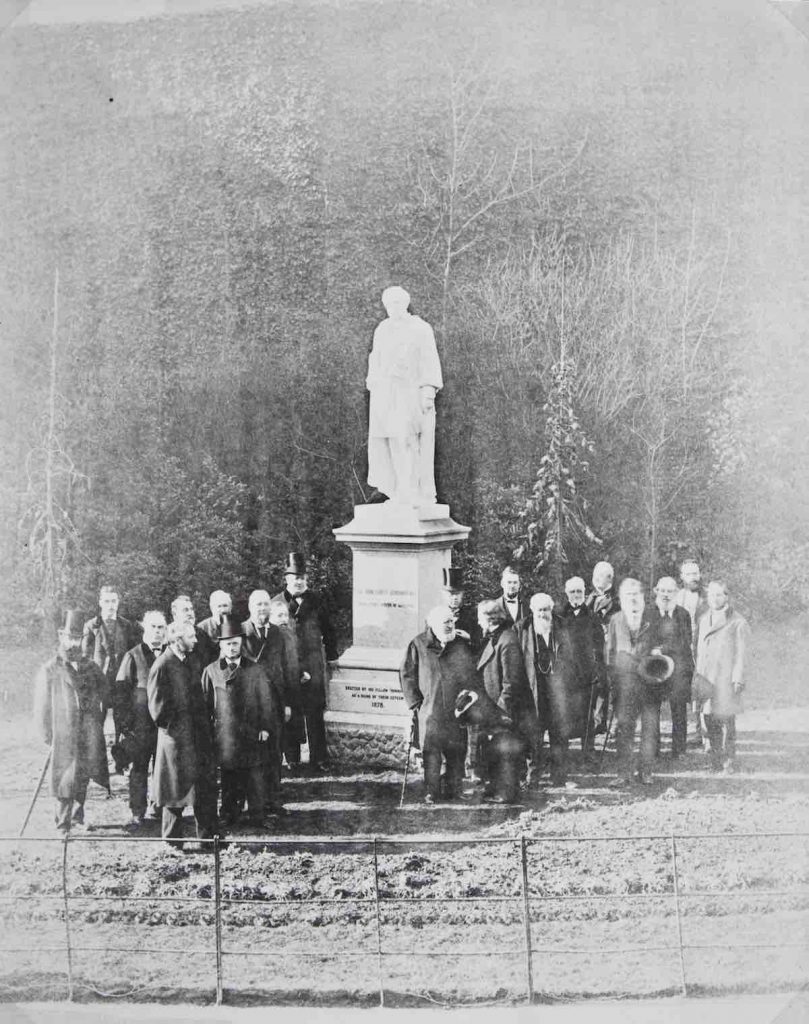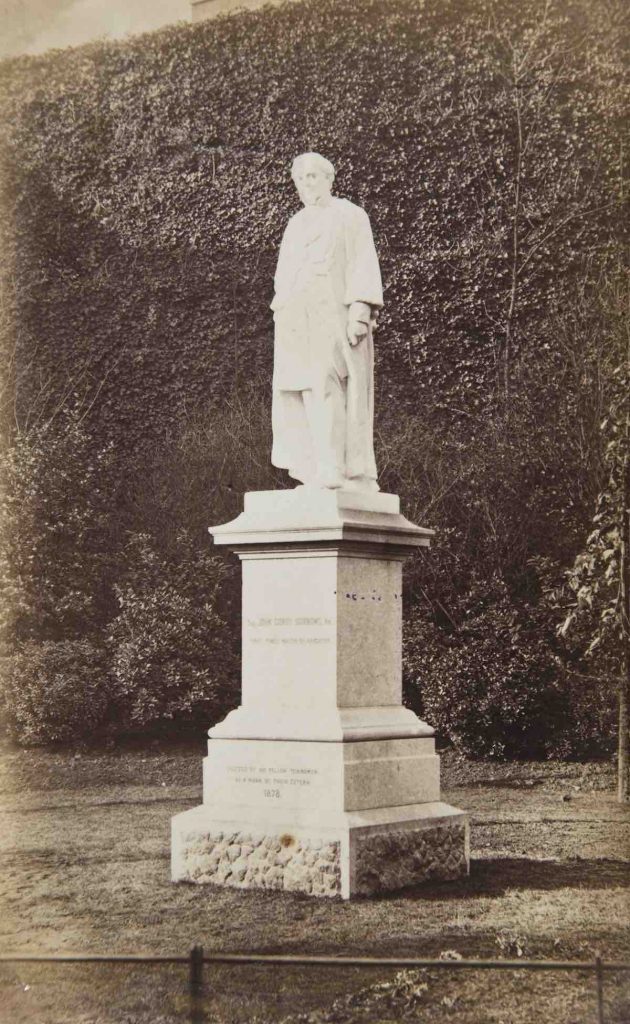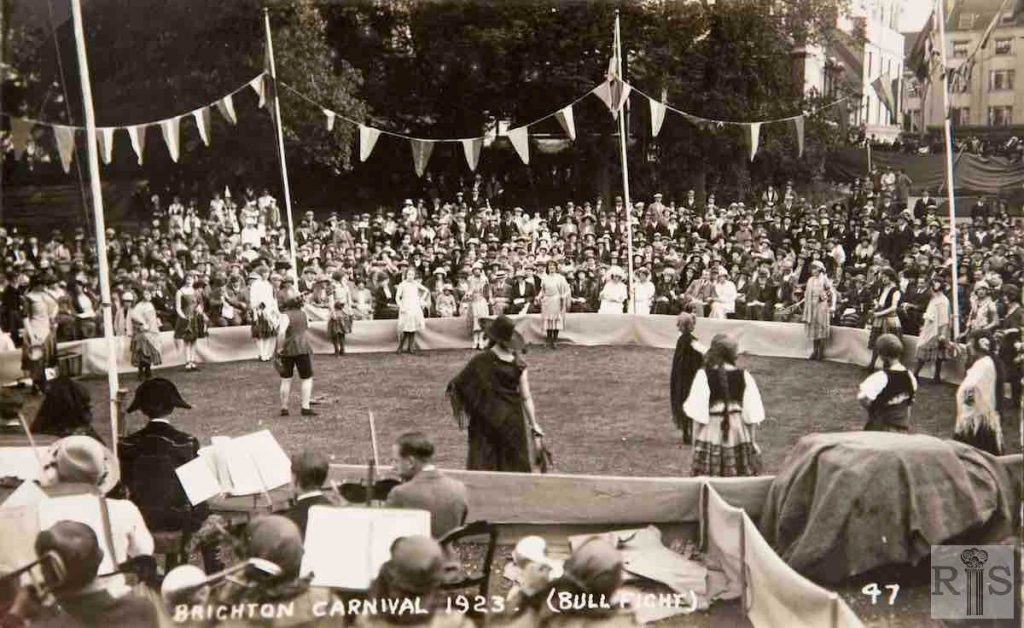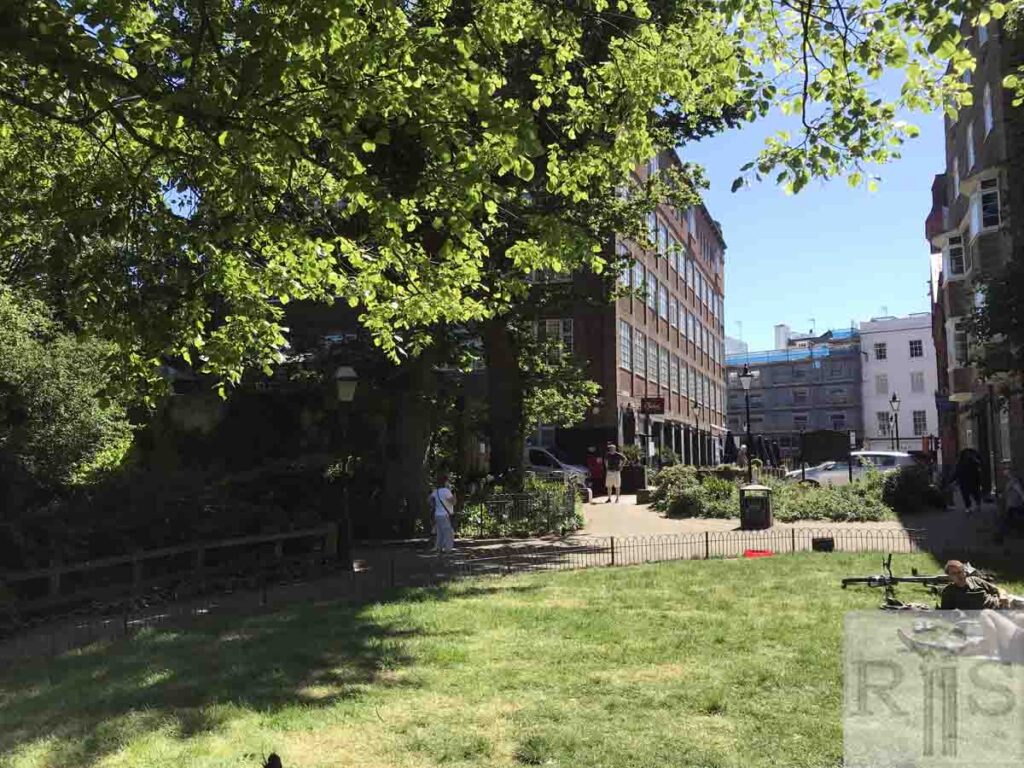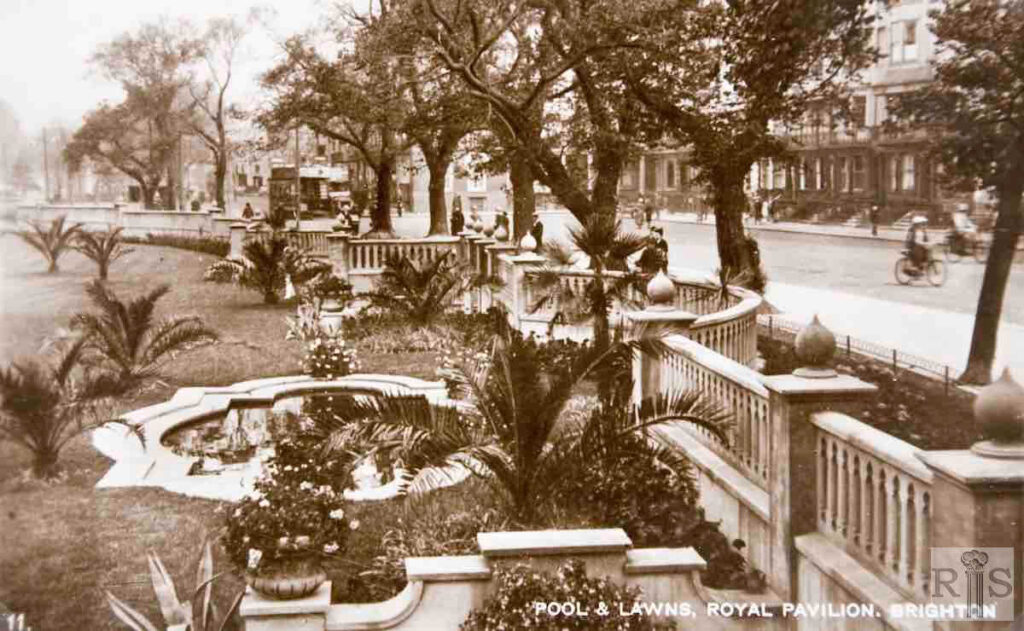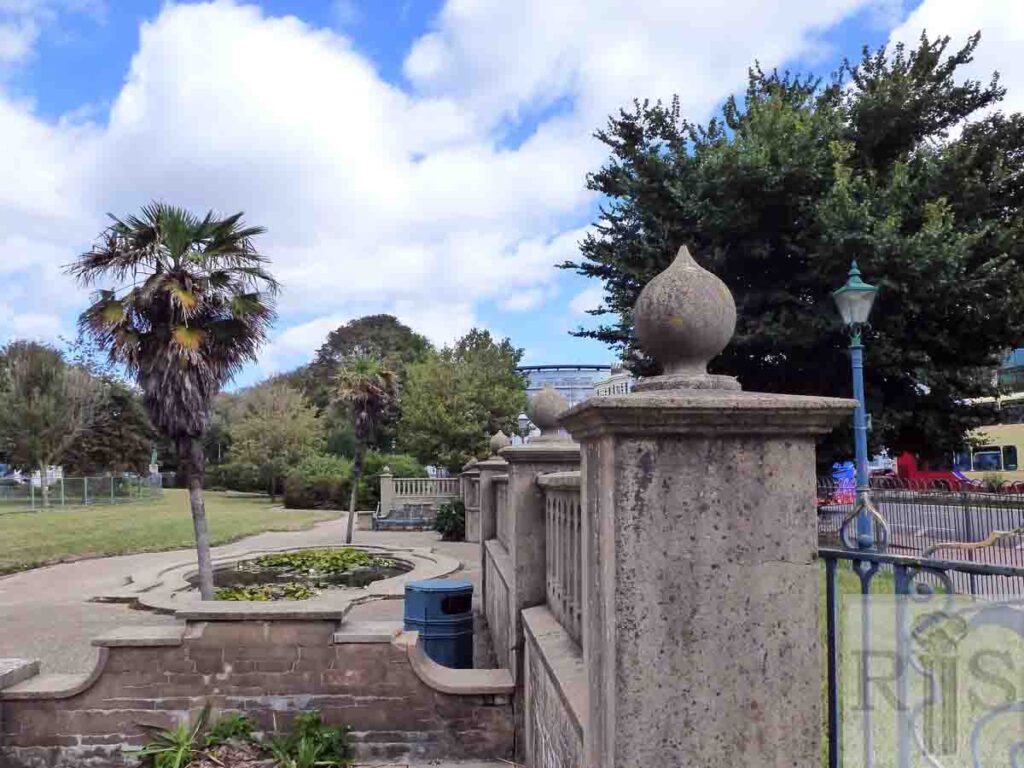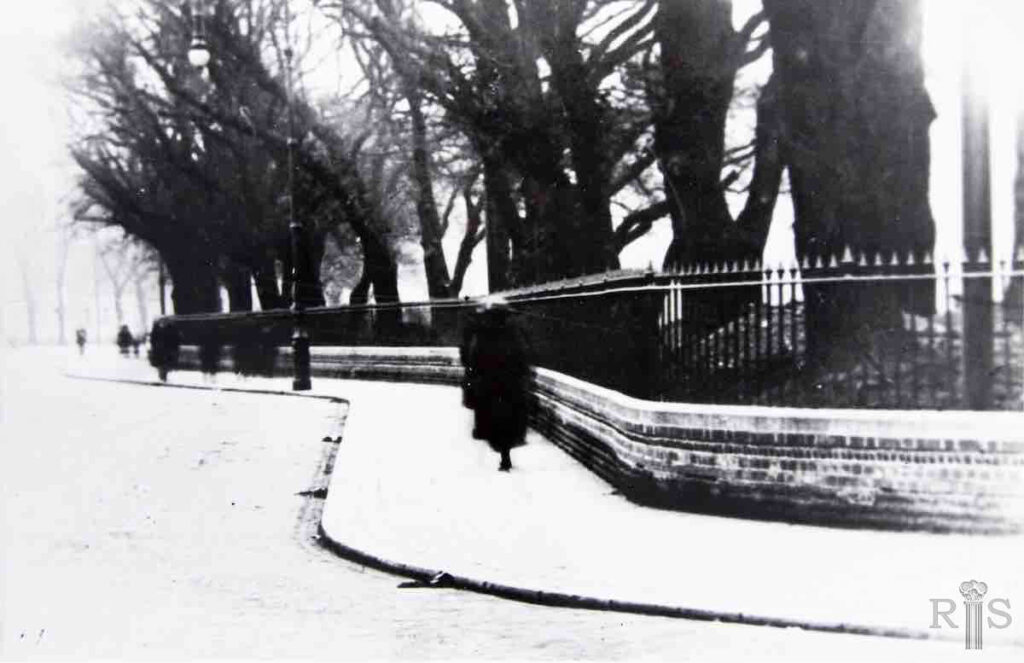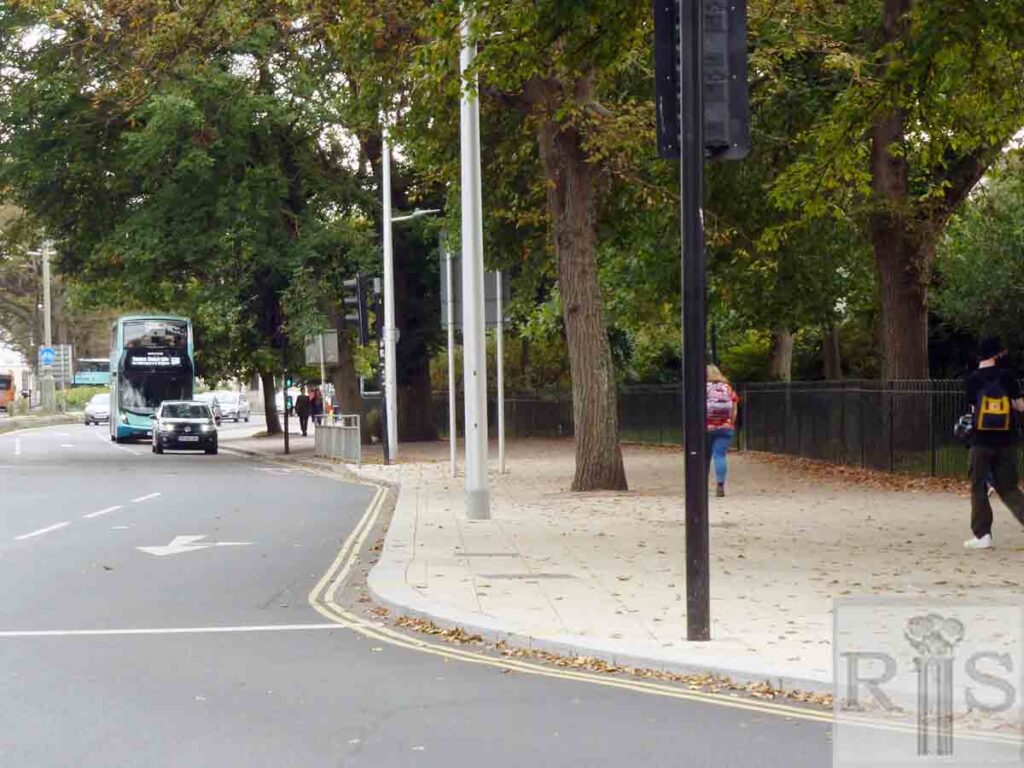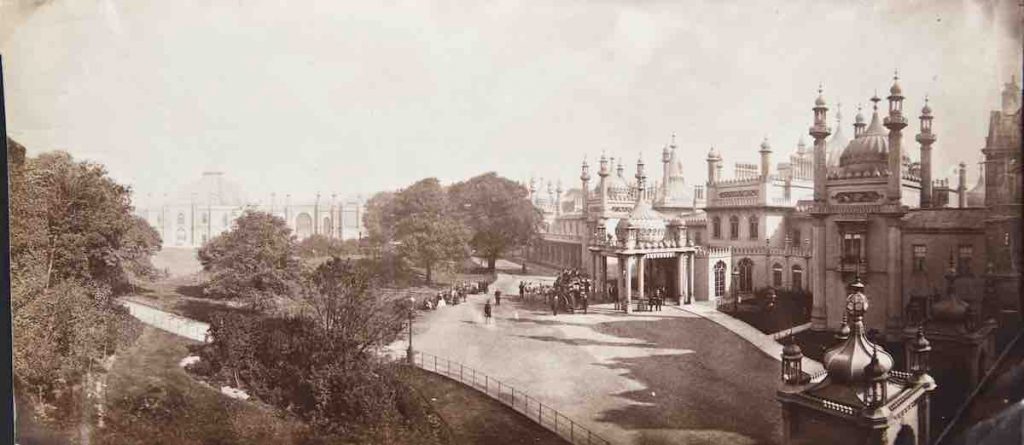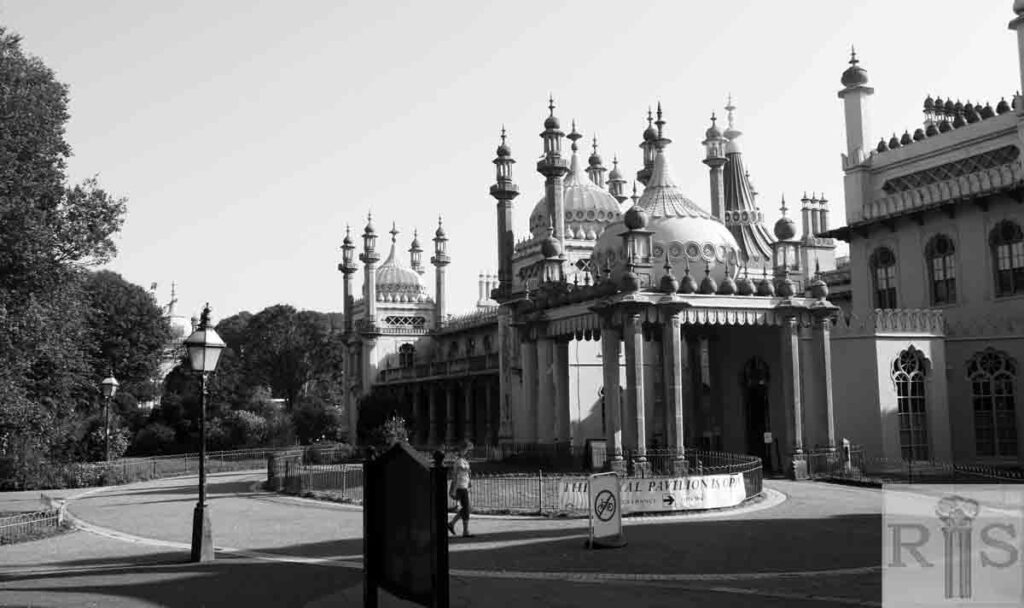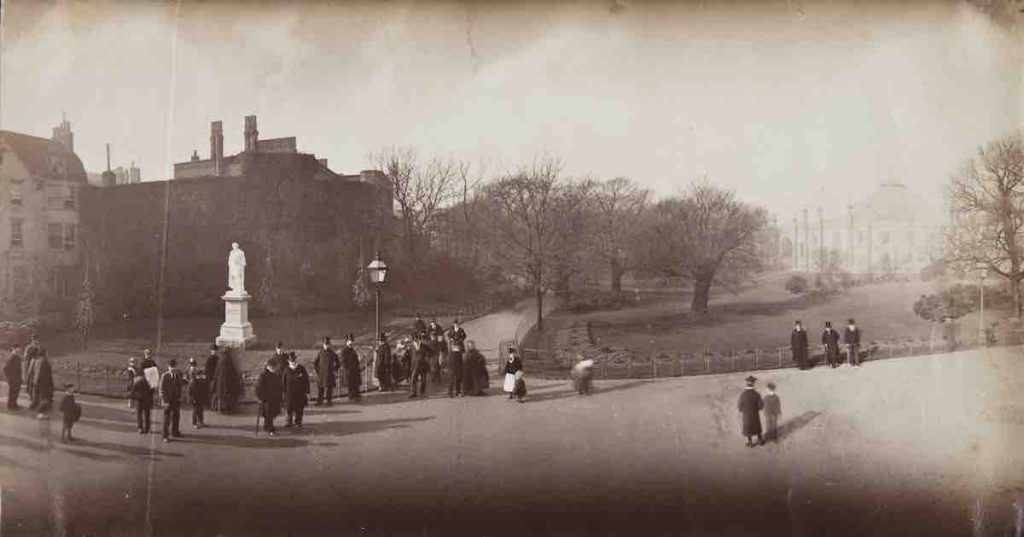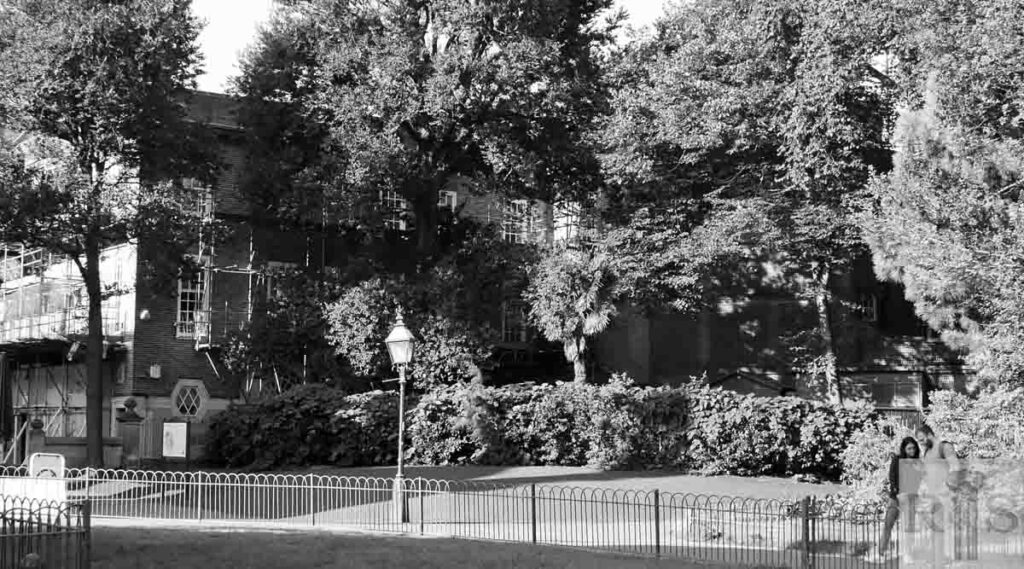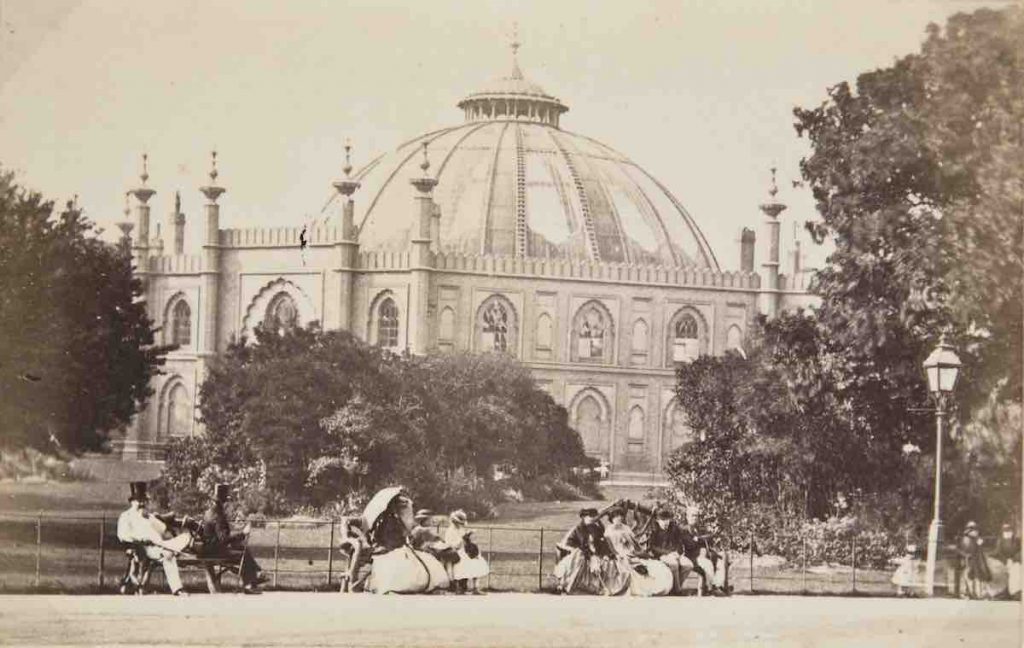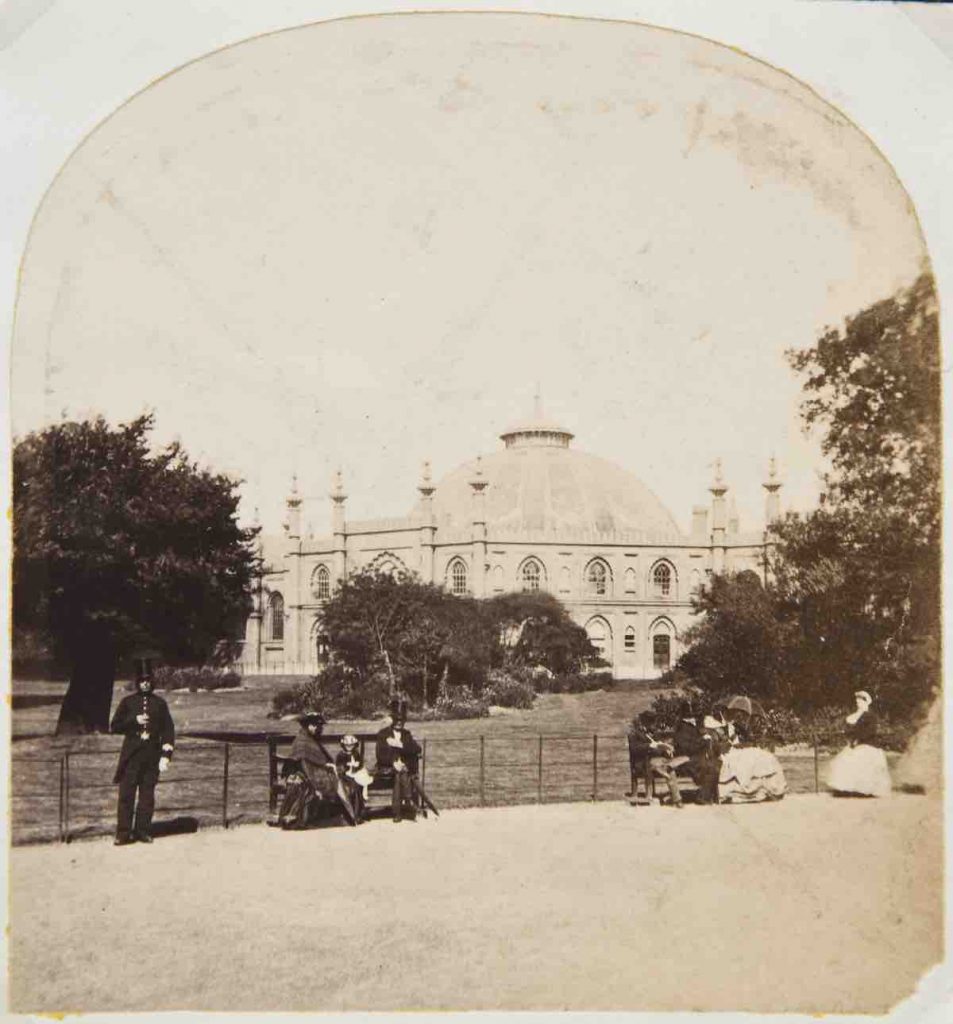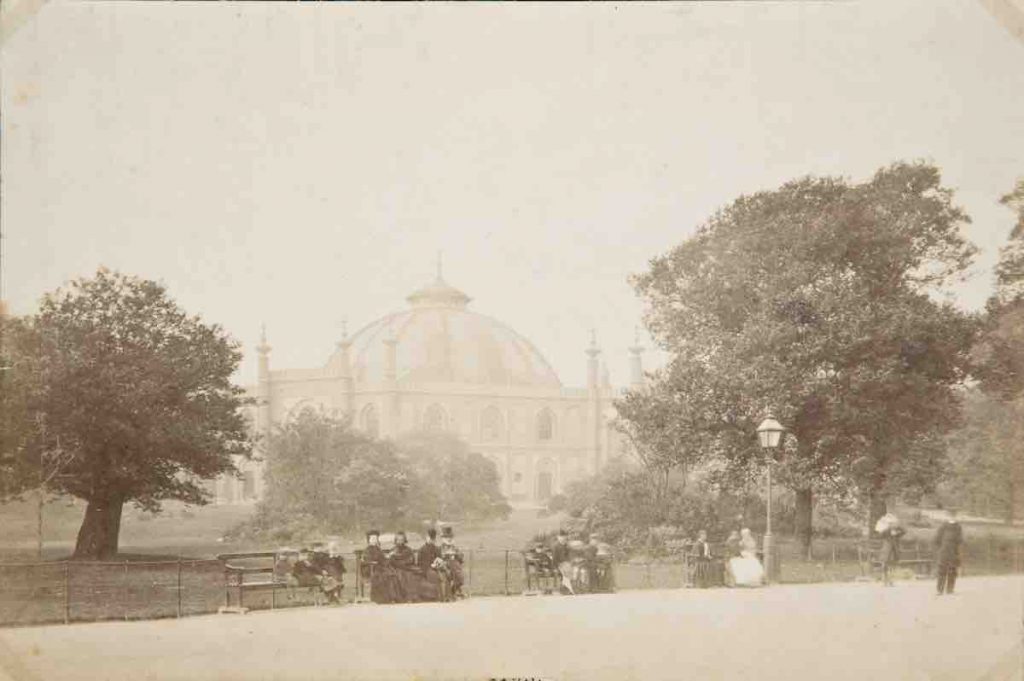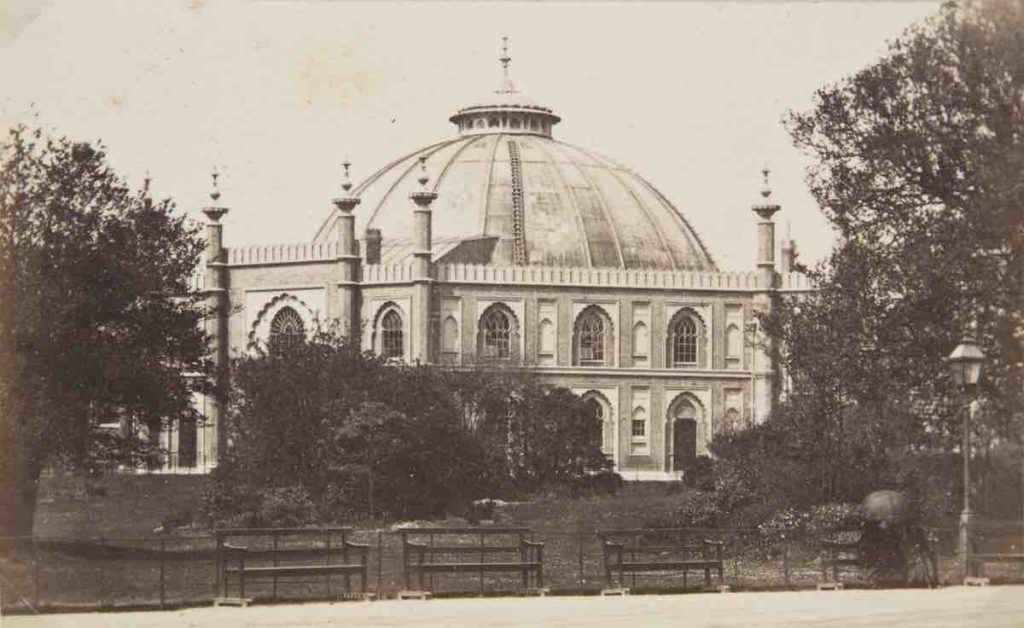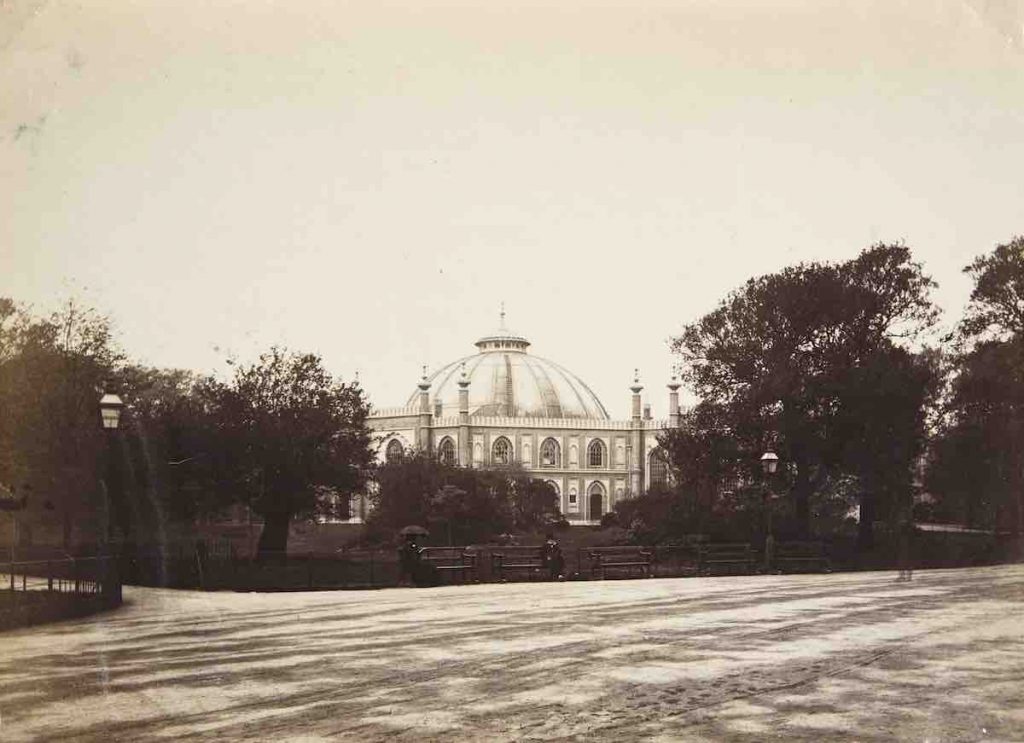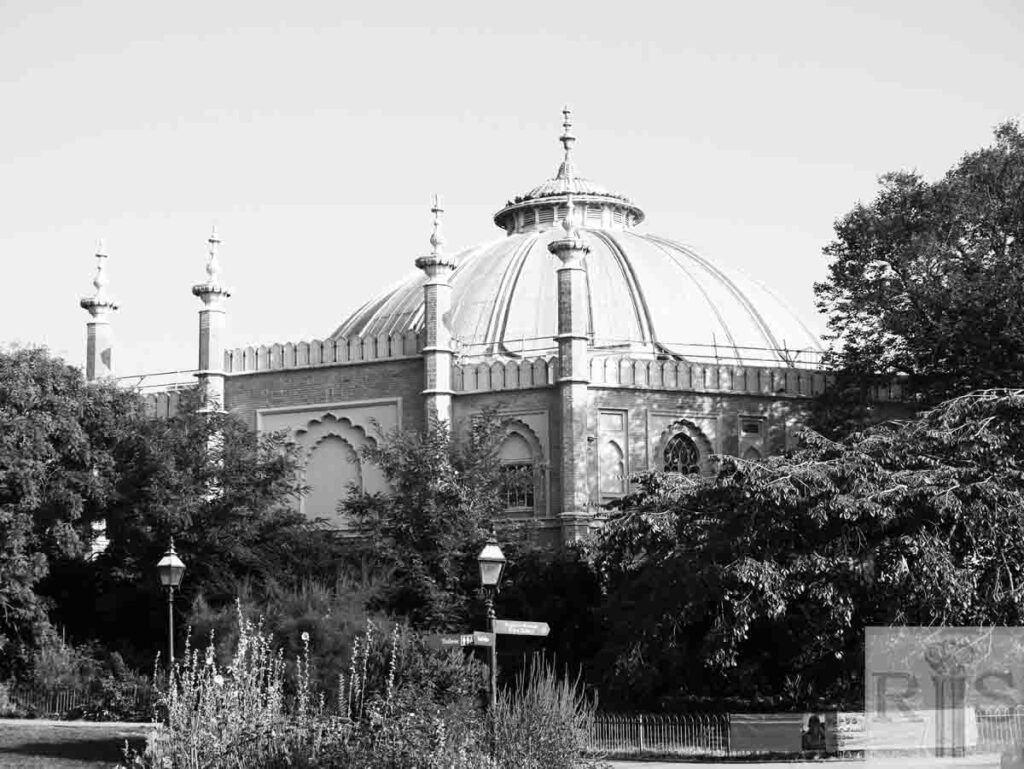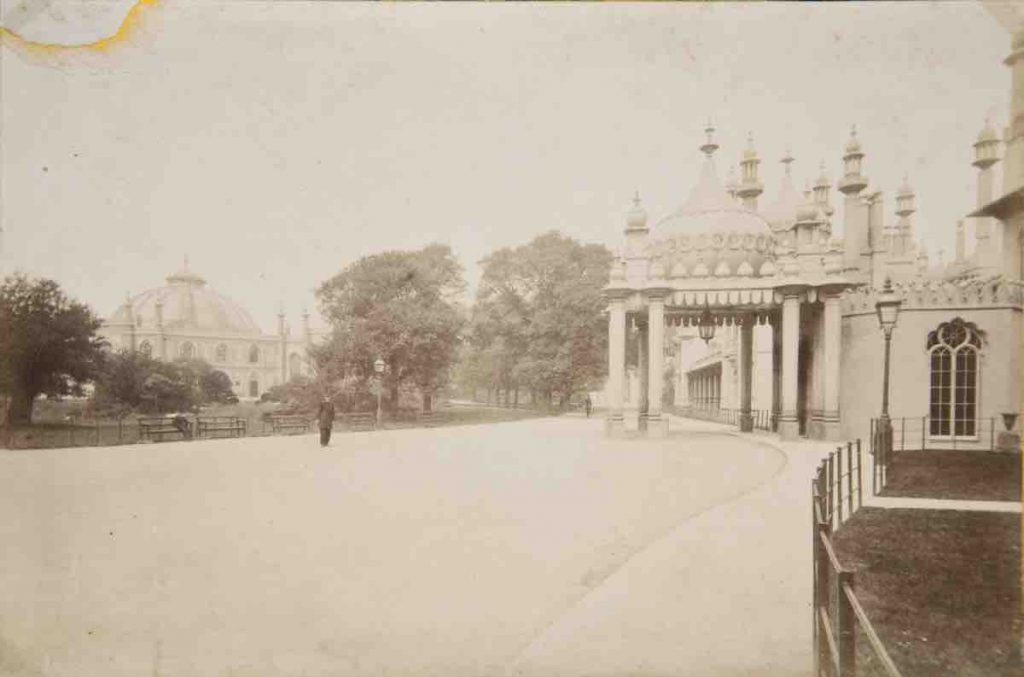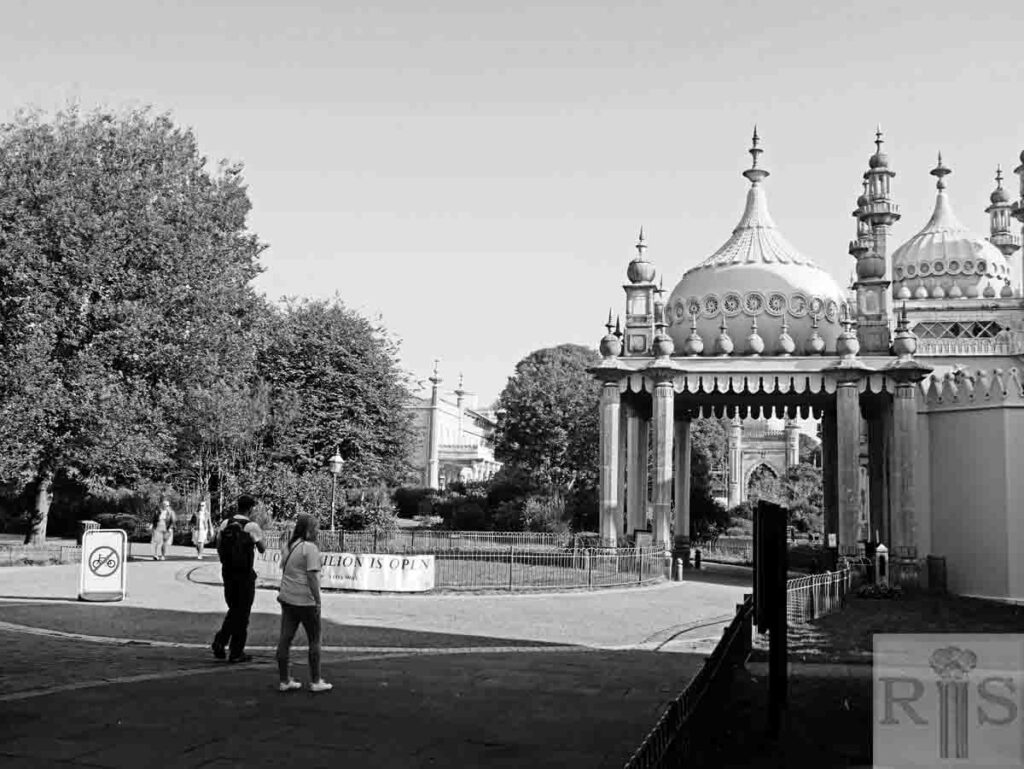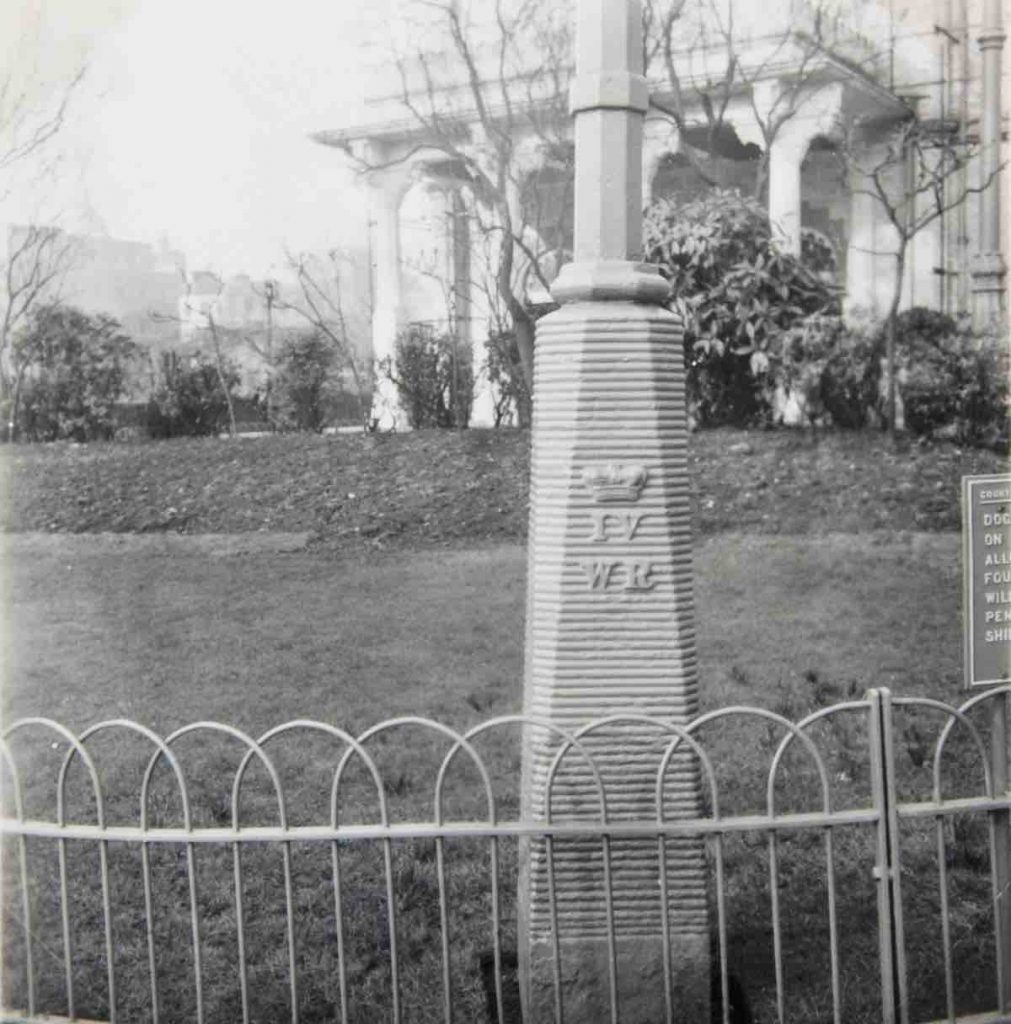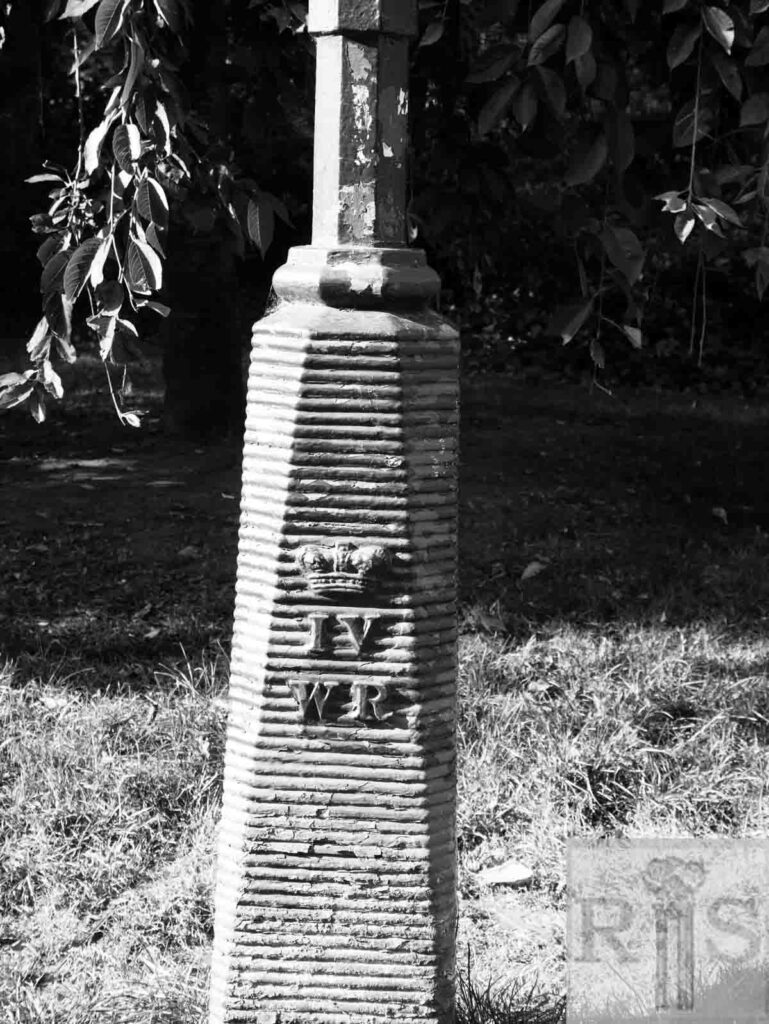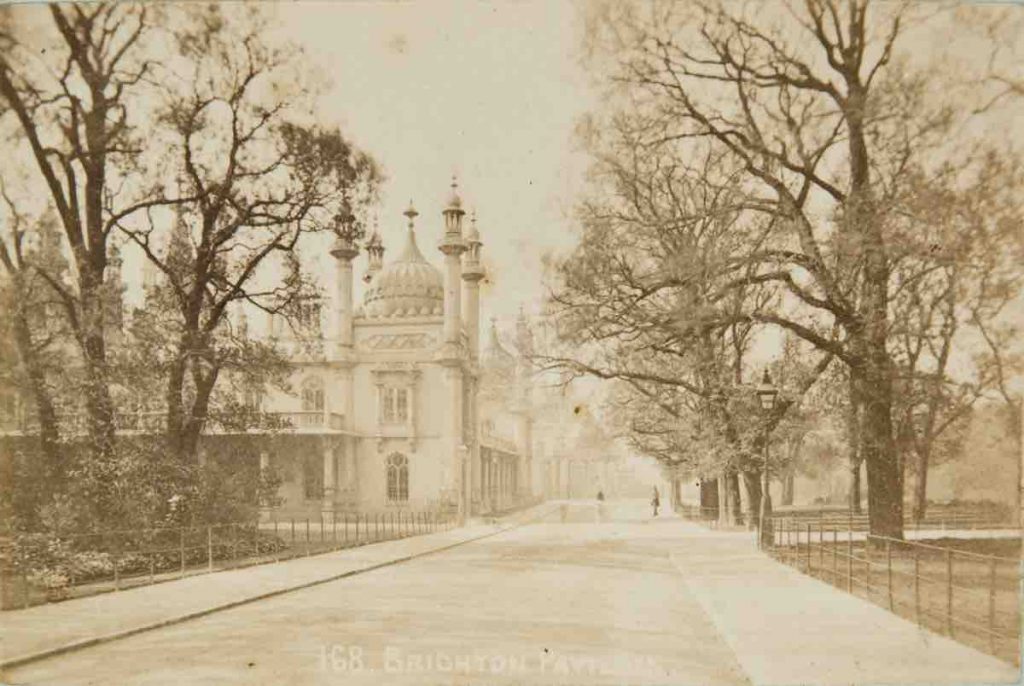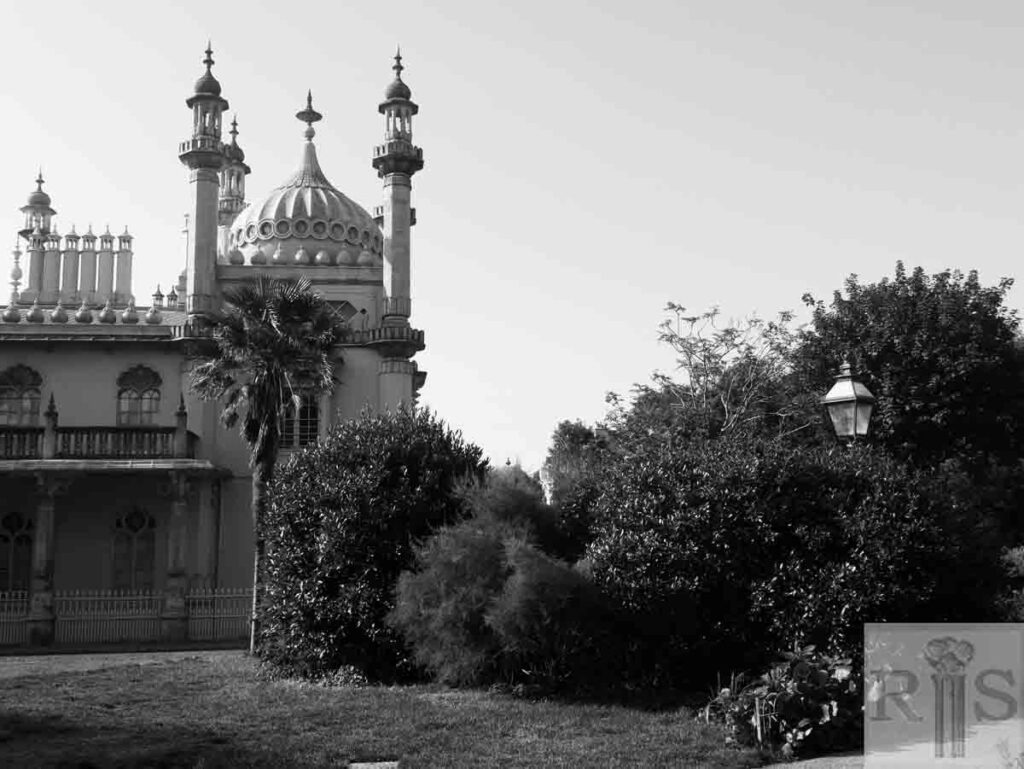James Gray: One of four photographs calling for little comment. Additional Information: ‘God Save the King’ – a floral tribute opposite the Royal Pavilion, around the statue of Sir John Cordy Burrows (now in the Steine) who was thrice mayor of Brighton and chose the city’s motto ‘In Deo Fidemus’. jgc_09_107
James Gray: A very clear copy of an old stereoscopic photograph of the Steine. The year is unknown and it would be idle to speculate when this was. At the left there is no sign of Brills Baths (1869) but this may be due to the angle of the photograph. The chief feature is the complete absence of traffic. jgc_10_035
James Gray: View of the front entrance to the Royal York Hotel, in Old Steine, about 1870. The adjoining houses, built in the 1830s, were originally separate private houses numbered 42 & 43, but they were soon taken into the Hotel, the ground floor rooms of the corner house being known as the Royal York Shades. jgc_10_017
James Gray: The statue of Sir John Cordy Burrows, three times Mayor of Brighton, was unveiled on 14 February 1878. jgc_10_154
James Gray: It seems a safe guess to say that the scene depicted was the occasion of the unveiling of the statue of Sir Cordy Burrows in the Pavilion Grounds, in February 1878. Among the civic dignitaries seen can be picked out Alderman J A L Brigden, Daniel Friend, Daniel Hack, A H Cox, and the Rev. J J Hannah. jgc_10_117
James Gray: This and the view below [jgc_10_134] are by the same photographer. Judging by the new condition of the statue, probably dates from 1878, or soon afterwards. jgc_10_135
James Gray: At first sight this photograph of the Brighton carnival, in June 1923, seems to have nothing to do with North Street, but look a little closer. The event took place on the Pavilion lawns at the end of Princes Place, and behind the awning can be seen the shops on the south side of North Street, one of them being that of Glasyer & Kemp, Chemists, who then occupied Nos 11 and 12. jgc_21_144
James Gray: Despite the 1930 postmark, the period is earlier as it shows 1 & 2 Pavilion Parade, removed in 1927. Also the traffic is going in both directions and one-way traffic was introduced in 1926. jgc_30_002
2020: The low pierced wall round the Royal Pavilion grounds seen in both these images was built in the early 1920s when the gardens were redesigned and the road on the Steine was widened.
James Gray: View of the Pavilion grounds, from the north, in 1922; at that time the old elm trees, now on the pavement, were inside the railing. These trees with masses of shrubs almost entirely excluded a view of the lawns. In 1921, Brighton Corporation in order to widen the approaches to the sea, decided to take a portion of the grounds for road widening.
James Gray: This fine panoramic photograph must have been taken from Carlisle House. One wonders what important function the top hatted gentleman on the four-horsed brake had been attending. At any rate they were attracting some attention from the bystanders. jgc_10_097
2021: No comment. (Photographer: Ron Fitton)
James Gray: From the obvious newness of the statue of Sir Cordy Burrows and the wintry dress of the bystanders, it is a fairly safe deduction that the photograph was taken soon after the unveiling of the statue in February 1878. The flowerbeds were first introduced in the Pavilion grounds in 1874. jgc_10_098
James Gray: [Top left] View of the Rotunda (now the Dome) from the Pavilion grounds, about 1866. jgc_10_099
James Gray: [[Top right] No comment. jgc_10_108
James Gray: [Middle left] View across the grounds to the Dome. jgc_10_114
James Gray: [Middle right] This view of the Dome is the work of William H. Mason, whose Repository of Arts was at 108 Kings Road, from the 1850s throughout the 1860s. jgc_10_133
James Gray: [Bottom left] This and the view above [jgc_10_135] are by the same photographer. jgc_10_134
2021: No comment. (Photographer: Ron Fitton)
